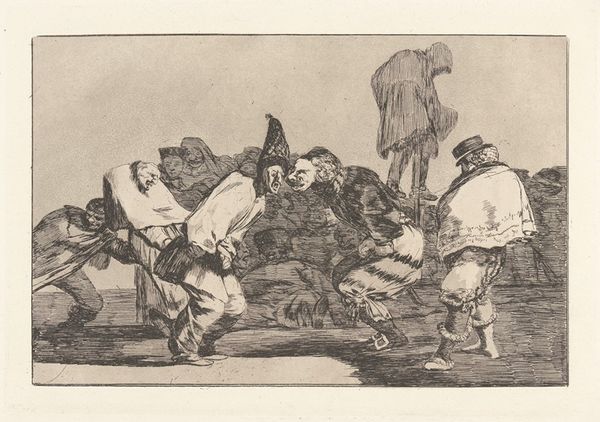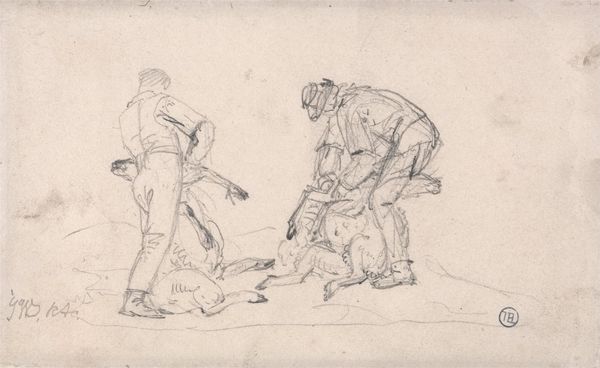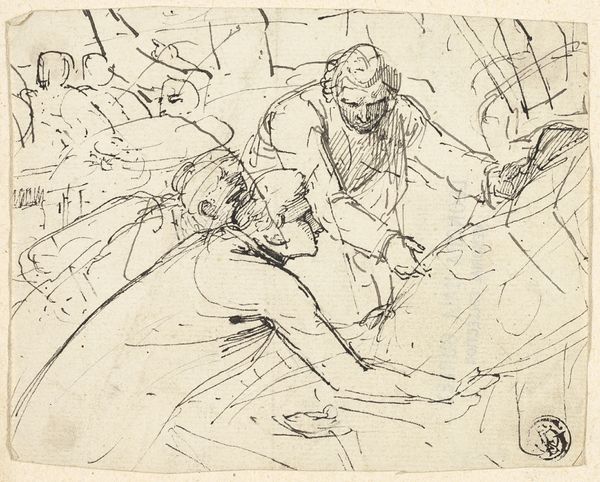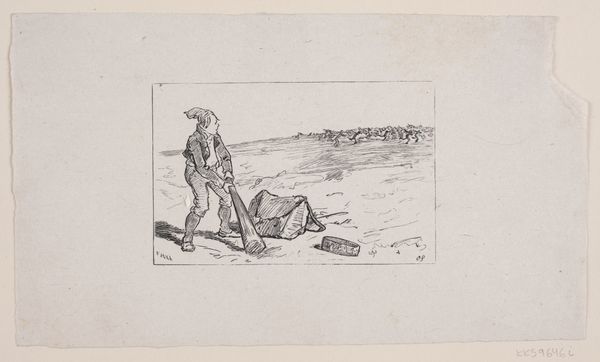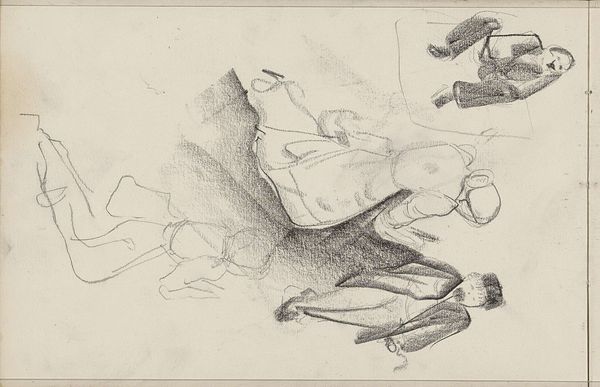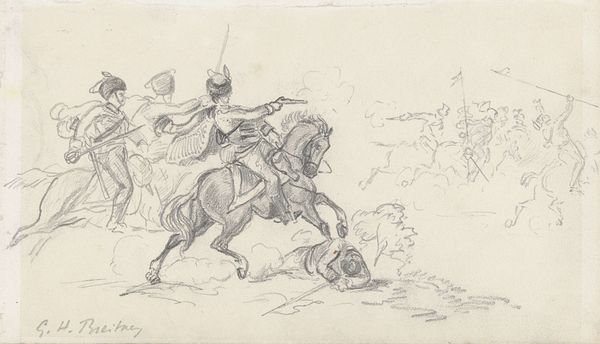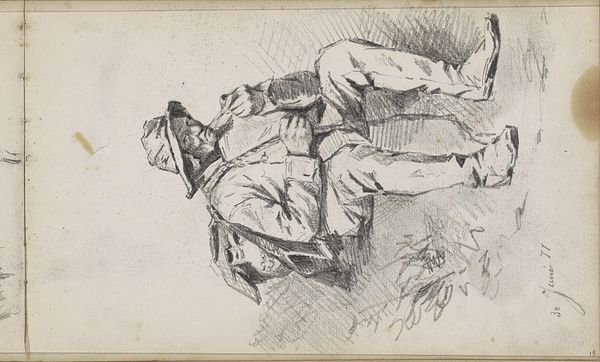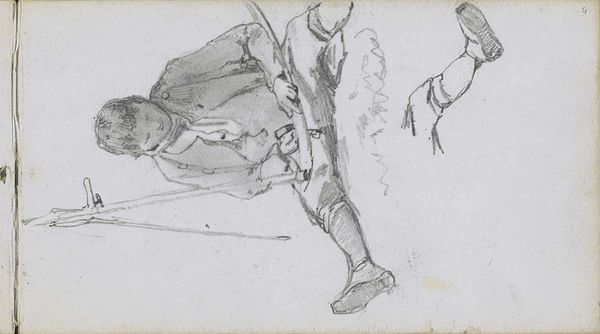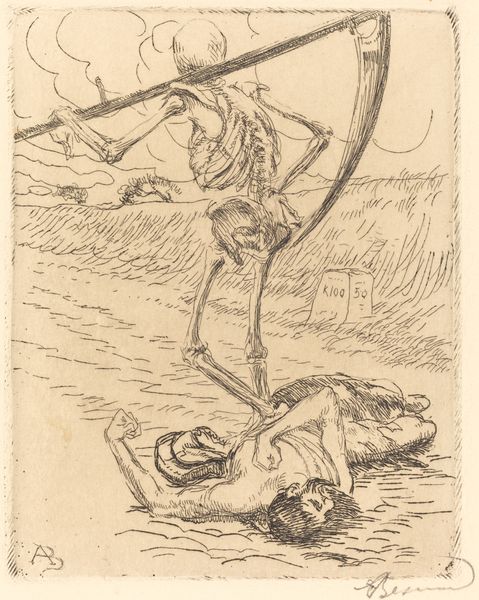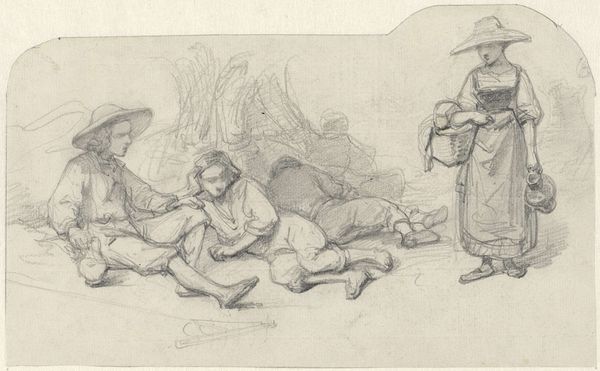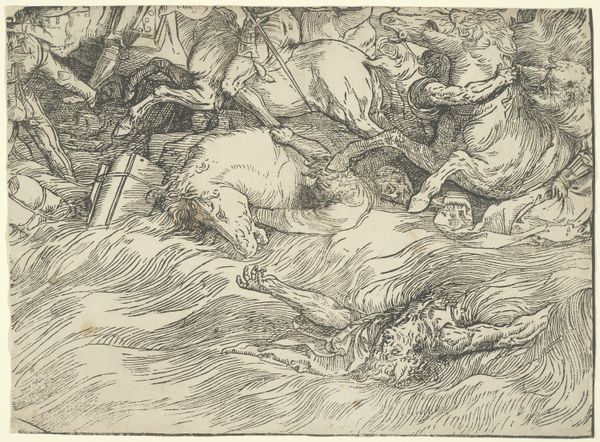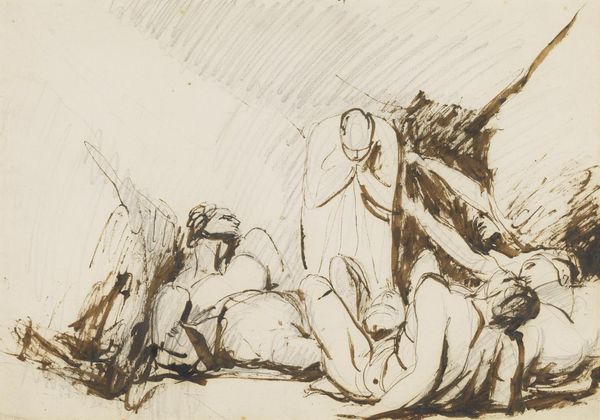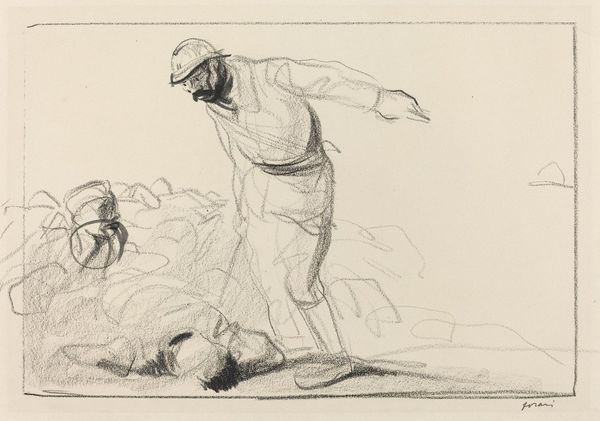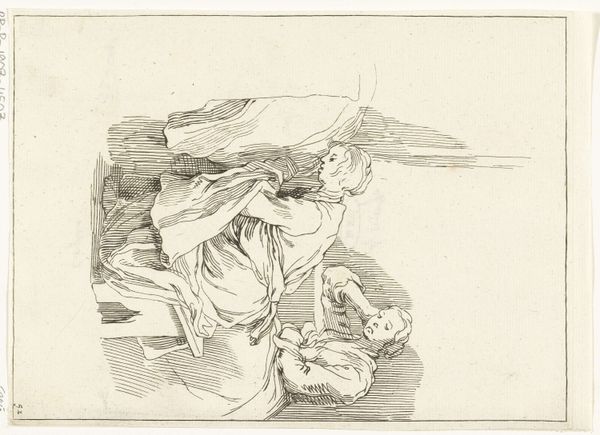
Don Quixote ligger såret og hjælpes af Sancho 1810 - 1873
0:00
0:00
drawing, pencil
#
drawing
#
light pencil work
#
ink drawing
#
pen sketch
#
cartoon sketch
#
figuration
#
personal sketchbook
#
ink drawing experimentation
#
romanticism
#
pen-ink sketch
#
pencil
#
sketchbook drawing
#
genre-painting
#
storyboard and sketchbook work
#
sketchbook art
Dimensions: 86 mm (height) x 142 mm (width) (bladmaal)
Curator: This is a pen and pencil sketch by Wilhelm Marstrand, likely created between 1810 and 1873, entitled "Don Quixote ligger såret og hjælpes af Sancho," which translates to "Don Quixote lies wounded and is helped by Sancho." Editor: My first thought is how delicately rendered this is. The fragility of the lines captures the vulnerability of Don Quixote so beautifully. It has a kind of tenderness about it despite the implied violence of his injury. Curator: I’m interested in the materials. We see a subtle interplay between pencil and ink – the pencil laying down initial forms, almost tentatively, and then ink used to define certain contours, adding a layer of commitment and depth to the image. Think about the availability of drawing materials then; these were relatively inexpensive, portable means for Marstrand to explore narrative ideas, and likely sketches for larger projects. Editor: Absolutely. It's important to acknowledge Cervantes’ "Don Quixote" as foundational within Western literature, exploring themes of idealism versus reality. Marstrand is situating himself within that history, offering a visual interpretation of those struggles, but also potentially commenting on his own role as an artist tilting at windmills. The relationship between Quixote and Sancho is very much the romantic view of patronage, with labor in the service of dreaming. Curator: Indeed. The very visible "work" of the artist's hand—the visible sketch lines, the corrections—speaks volumes about artistic labor itself, inviting reflection on the hours Marstrand invested in visualizing this literary scene, on paper he bought with money he earned, which afforded him time away from other labors to create art. Editor: And it becomes crucial to ask *who* has historically been granted the opportunity to dedicate themselves to such artistic pursuits, and whose stories are deemed worthy of such representation. Sancho's downcast pose certainly invites considering his material conditions as a poor laborer vis-à-vis Quixote’s lofty aspirations. Curator: Well, seen in the context of Marstrand's broader oeuvre, these kinds of sketches were really about honing a specific kind of academic skill and a certain kind of visual storytelling, preparing artists for grander narratives in painting, in particular, commissioned narratives of heroism. It’s all work, isn’t it? Editor: That is true, I agree the themes of romanticism invite reflection, also, about the broader society, economics and labor of its time. The artist included! Curator: Precisely. Seeing this work has emphasized the means by which an artist visualizes grand narratives but remains connected to earthly materials, labour and consumption, after all. Editor: For me, viewing the sketch has emphasized the historical and social frameworks and questions surrounding the canonisation of stories that inform a western imaginary and history that Marstrand so sensitively engages.
Comments
No comments
Be the first to comment and join the conversation on the ultimate creative platform.
